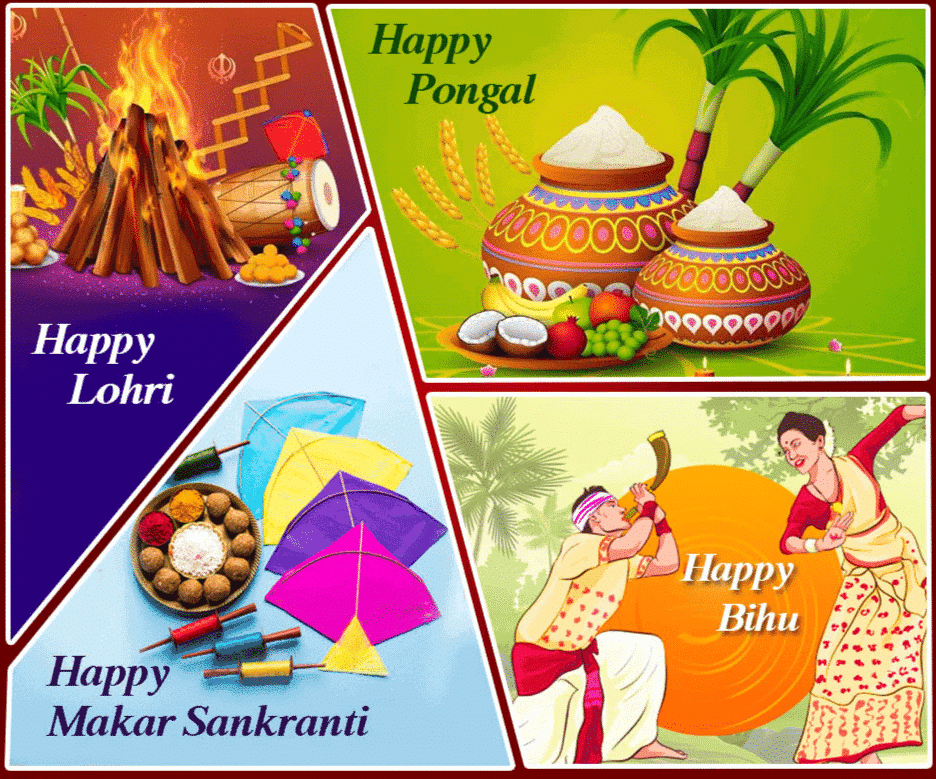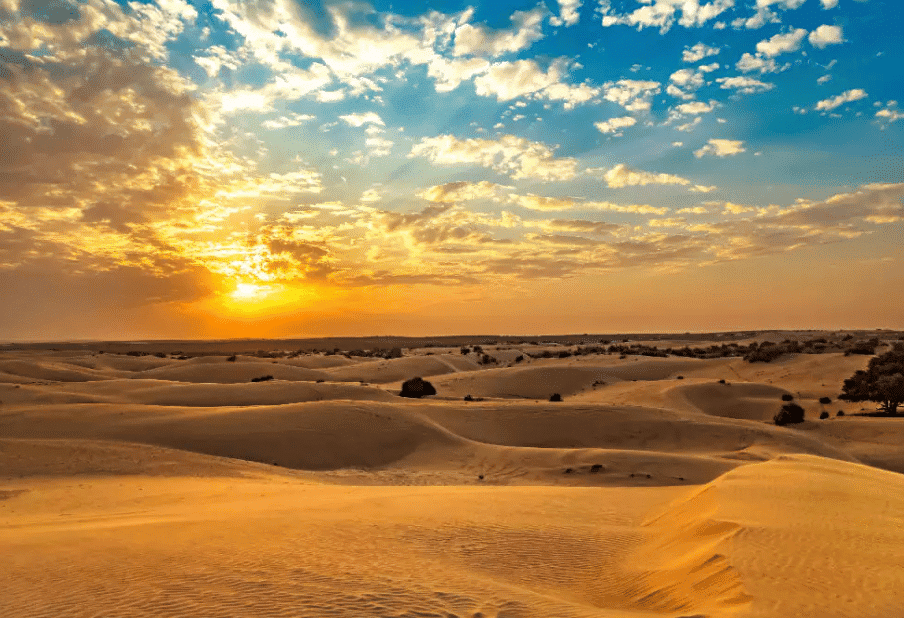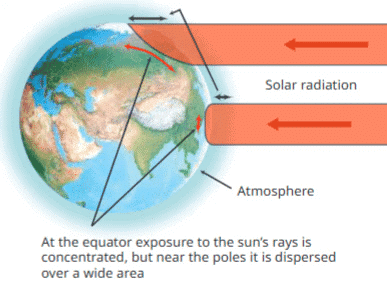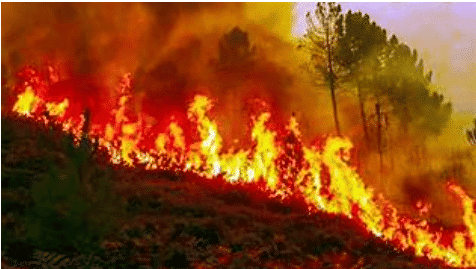Class 7 Social Science Chapter 3 Question Answers - Climates of India
Short Answer Questions
Q1: How do seasons influence festivals in India?
Ans: Many Indian festivals are linked to the changing seasons and farming cycles. For example, Baisakhi celebrates the harvest in spring, while Onam marks the monsoon harvest in Kerala.
 Seasons influencing festivals
Seasons influencing festivals
Q2: Why does the Deccan Plateau receive less rainfall than the Western Ghats?
Ans: The Western Ghats block monsoon winds, causing heavy rain on their western slopes. The Deccan Plateau lies in the rain shadow region, receiving less rainfall.
Q3: How does altitude affect temperature in cities like Ooty and Coimbatore?
Ans: Though both cities are at the same latitude, Ooty is cooler because it is at a higher altitude. Higher places have cooler temperatures due to thinner air.
Q4: Why do inland areas like Nagpur experience greater temperature variation than coastal cities like Mumbai?
Ans: Inland areas heat up and cool down faster, leading to extreme temperatures. The sea near coastal cities keeps the climate more stable.
Q5: What is the role of sea winds in India’s climate?
Ans: Sea winds carry moisture that leads to rainfall during monsoons. They also help in regulating temperatures in coastal areas.
Q6: How do people in the Thar Desert adapt to the arid climate?
Ans: People wear loose cotton clothes and build thick-walled houses. They store rainwater in tanks and use water carefully.
 Thar Desert
Thar Desert
Q7: What is the difference between weather and climate?
Ans: Weather changes daily, like rain or sunshine, while climate is the average weather over many years. Climate gives a long-term pattern of a region.
Q8: How do topographical features affect rainfall in India?
Ans: Mountains like the Himalayas block cold winds and help in snow formation. The Western Ghats force monsoon winds to rise, causing rainfall on one side and dry weather on the other.
Q9: How do monsoons affect agriculture in India?
Ans: Most Indian farmers depend on monsoon rains to water their crops. A poor monsoon can lead to crop failure and food shortages.
Q10: Why is understanding microclimates important for farmers?
Ans: Microclimates help farmers choose the right crops for small areas. Local weather differences can affect growth and harvesting times.
Q11: What is traditional knowledge used for predicting monsoons?
Ans: Signs like fish surfacing or trees blooming have helped people predict rain for centuries. These signs are still used in some regions along with modern science.
Q12: How does climate influence traditional art and culture in India?
Ans: Folk songs, dances, and rituals are often inspired by the changing seasons. Many communities pass down stories and customs related to rain, farming, or heat.
Long Answer Questions
Q1: Explain how latitude and the Earth’s shape influence climate in different parts of India.
Ans:
- Latitude determines how directly the sun’s rays hit a place.
- Areas near the Equator, like Kanyakumari, receive more direct sunlight and are hotter.
- Places farther north, like Srinagar, receive slanted rays and are cooler.
- The Earth’s curve spreads sunlight unevenly, affecting temperatures.
- This results in India having tropical weather in the south and cooler conditions in the north.
- That’s why India has diverse climatic zones.
 Effect of Latitude
Effect of Latitude
Q2: What are the characteristics of the summer and winter monsoons in India?
Ans:
- The summer monsoon brings heavy rain from June to September, as moist winds blow from sea to land.
- It starts in the south and spreads across the country.
- The winter monsoon, from October to January, involves dry winds moving from land to sea.
- Some moisture from the Bay of Bengal causes rain in east and south India.
- Together, both monsoons impact farming and water supply across India.
Q3: How does India’s geography contribute to its climate diversity?
Ans:
- India has mountains, plateaus, deserts, and coastal areas, each affecting the climate.
- The Himalayas block cold winds and cause snowfall.
- The Thar Desert is hot and dry due to open terrain and low rainfall.
- Coastal regions get heavy rain because of the sea.
- The Deccan Plateau has moderate rainfall and heat.
- This diverse geography creates many different climates across the country.
Q4: Describe how floods and glacial bursts impact different parts of India.
Ans:
- Floods occur when rivers overflow or drainage fails during heavy rainfall.
- In Himalayan regions, melting glaciers or cloudbursts can cause flash floods.
- Glacial lake bursts, like in Uttarakhand in 2013, destroyed villages and claimed lives.
- Lowland states like Bihar and Kerala also face monsoon floods.
- These disasters damage homes, crops, roads, and force people to relocate.
Q5: What are the causes and effects of landslides in India?
Ans:
- Landslides are sudden falls of rocks or soil in hilly areas like Himachal Pradesh or Sikkim.
- Heavy rain, deforestation, or earthquakes can trigger them.
- Poor construction on unstable slopes increases risk.
- Landslides destroy roads, block rivers, and damage homes.
- They are dangerous for people living in mountain areas and require early warning systems for safety.
Q6: How do forest fires affect the environment and people?
Ans:
- Forest fires burn trees, destroy habitats, and kill wildlife.
- They release smoke that pollutes the air and harms health.
- Fires can spread quickly due to wind, dry weather, or human carelessness.
- Regions like Uttarakhand and Madhya Pradesh face these fires often.
- People may lose homes or farmland, and animals lose shelter and food.
- Firefighting efforts and awareness can reduce these disasters.
 Forest Fires
Forest Fires
Q7: Explain how climate change is affecting India’s weather and agriculture.
Ans:
- Climate change is causing unpredictable rainfall and rising temperatures.
- Winters are getting shorter, and heatwaves are becoming common.
- Crops fail when rains are too little or come at the wrong time.
- Farmers suffer losses, and food prices rise.
- Poor communities are more vulnerable to these changes.
- Tackling climate change is essential to protect India’s agriculture and economy.
Q8: What are some solutions to reduce the impact of climate change?
Ans:
- One solution is reducing greenhouse gas emissions by using renewable energy like solar and wind.
- Planting more trees helps absorb carbon dioxide.
- People can also save electricity, recycle, and reduce waste.
- Governments can promote eco-friendly laws and green technology.
- Adapting to climate change through better farming and city planning is also important.
- Together, these steps help fight global warming.
|
23 videos|204 docs|12 tests
|
FAQs on Class 7 Social Science Chapter 3 Question Answers - Climates of India
| 1. What are the major seasons in India? |  |
| 2. How does the climate vary in different regions of India? |  |
| 3. What factors influence the climate of India? |  |
| 4. What is the impact of the monsoon season on agriculture in India? |  |
| 5. How do climate change and global warming affect India's climate? |  |
















